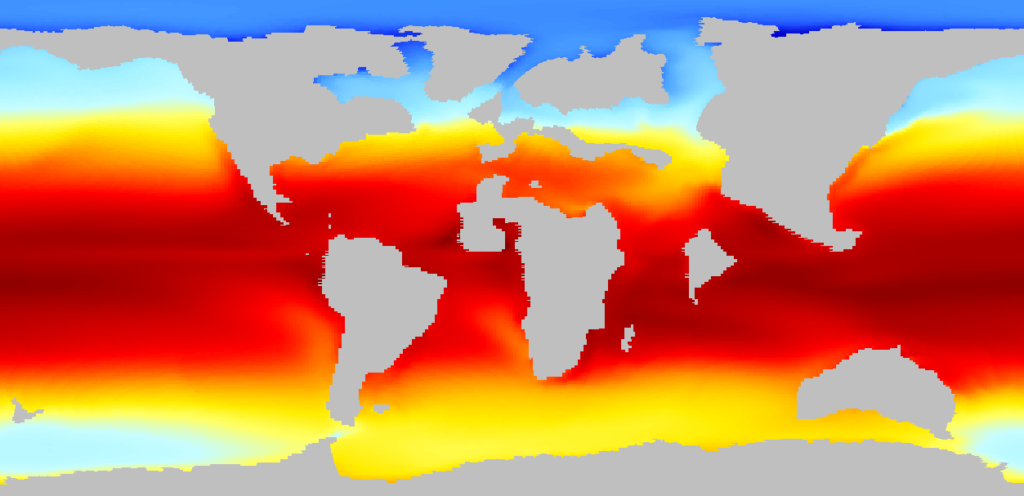
When the Earth’s climate warms, polar regions tend to experience a greater increase in temperature than tropical regions. This phenomenon (known as “polar amplification”) is important to understand because it influences the magnitude of ice melt and sea level rise we expect to see in the coming centuries. In general, we have two ways of predicting how strong this amplification effect is: computer models based on our current understanding of climate physics, and fossil reconstructions from warm periods in Earth’s past. However, these two approaches often give different answers, with fossil evidence from organic biomarkers predicting much greater polar warming than can be replicated by the models. Are the fossil data simply wrong, or are we still missing something important in the climate models that is causing us to underestimate polar warming?
In a new study in PNAS, my colleagues and I compiled a large dataset of δ18O measurements from fossil foraminifera and developed new techniques to reconstruct sea-surface temperatures over the past 95 million years. Our new approach yields polar temperatures more in line with the models than with the most extreme organic-based reconstructions, improving confidence that climate models can accurately predict polar amplification. We also observed a surprising consistency in the behavior of polar amplification over time, providing clues into the types of Earth system processes which may be driving polar temperatures over long timescales.
For more on this project, see this article in Yale News, March 7, 2022, or read the full paper in Proceedings of the National Academy of Sciences, March 7, 2022, vol. 119 (11) e2111332119.